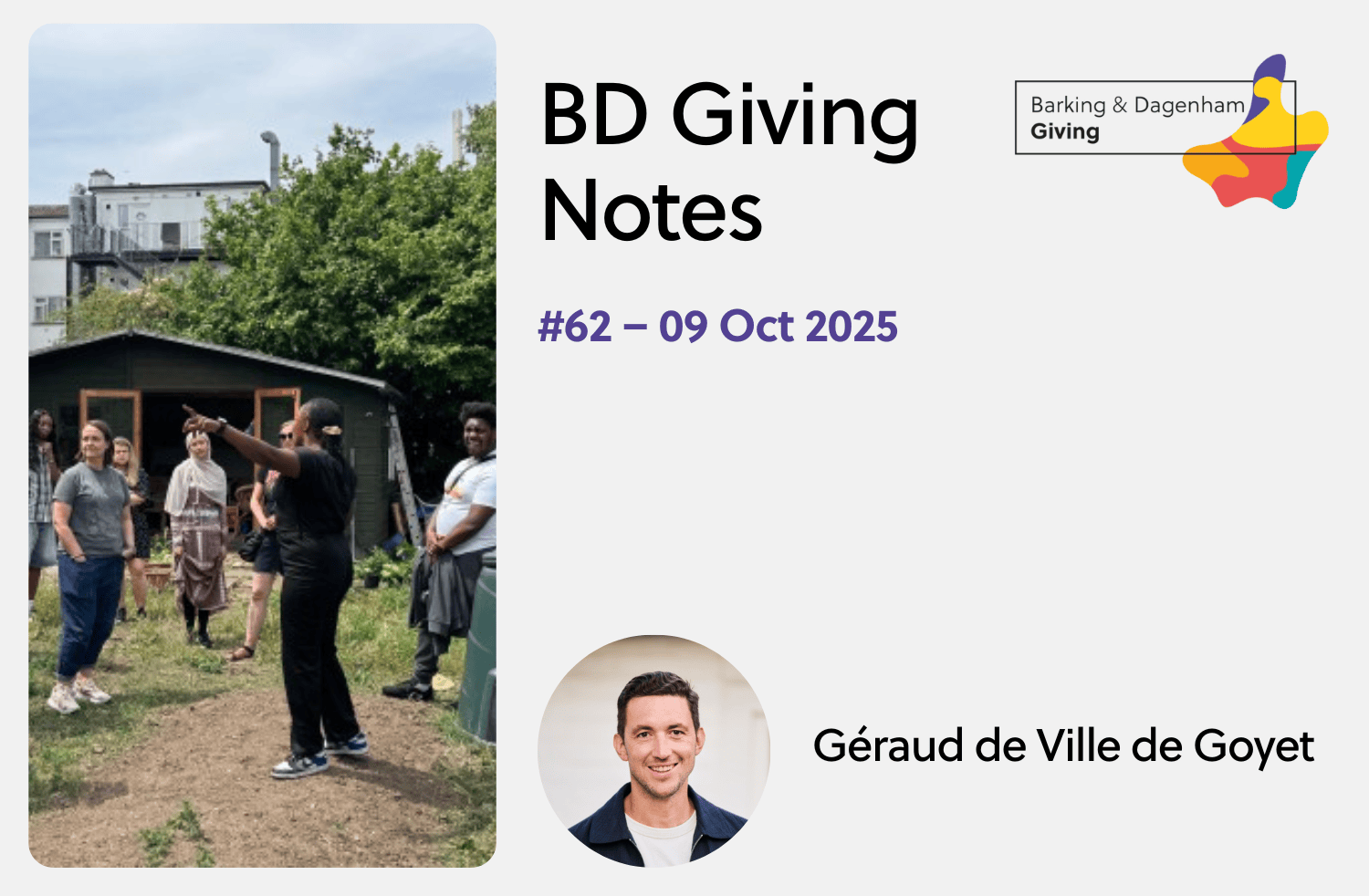
£5 billion over ten years is a bold commitment. The challenge now is to make it work for communities. My reflections on what it will take to make Pride in Place succeed.
Géraud de Ville de Goyet (PhD)
The government’s new Pride in Place strategy marks a welcome recognition that thriving communities need more than bricks and mortar: they need relationships, trust and local leadership.
From a local perspective, and following a difficult year for the voluntary, community and social enterprise (VCSE) sector, the announcement of the Pride in Place Impact Fund has been good news. Many funders have paused or reshaped their programmes, so the government’s decision to invest £1.5 million in Barking and Dagenham, alongside 94 other areas, brings a much-needed boost.
It’s particularly encouraging to see a funding body allocate resources based on clear data about where need exists, with transparency on how those decisions were made. Avoiding the usual bidding wars that pit communities against one another for short-term pots of money is also the right approach. This shift towards data-informed fairness reduces competition fatigue and focuses everyone’s energy on what matters: improving lives.
Yet, it’s also true that the challenges our communities face run deep. Decades of underinvestment have eroded the local relationships and social infrastructure that make places resilient. Rebuilding these takes time, care and patient capital. It requires place-based stakeholders to work together behind a shared vision — something we’ve been striving to do through the BD_Collective. And believe me, it’s bloody hard work.
That’s why it’s encouraging to see government commit up to £5bn across 244 places through its new Pride in Place strategy. Its three objectives — empowering people to take back control, building stronger communities and creating thriving places — closely reflect the work BD Giving has championed since its inception. We see every day how progress is possible when the right conditions are in place. But it takes sustained investment and a willingness to share power so the 10-year commitment is an important and welcome start.
Our experience in Barking and Dagenham shows that if government is serious about creating safer, healthier neighbourhoods where communities can thrive, it needs to take a three-pronged approach:
- Invest in enduring local infrastructure. Fund leadership and coordination roles that enable collaboration, learning and innovation across sectors. This means resourcing posts in social sector organisations for the long run, and providing flexible funding to convene partners, experiment with new approaches, and learn from what doesn’t work as well as what does.
- Protect funds from being diverted. Make it clear that Pride in Place money should not be used to plug gaps in shrinking local authority budgets. Competitive mindsets can quickly resurface in times of scarcity, and hoarding resources rarely leads to effective collaboration.
- Connect with the impact economy. We need a funding infrastructure that blends public and private capital while remaining simple and accessible for local actors. It’s the government’s job to design and coordinate that system, so that place-based organisations can focus on delivery rather than constant fundraising.
We’re glad to see MHCLG take a proactive stance on reversing more than a decade of underinvestment. But we also know that no single department can deliver this change alone. Turning the ambition of Pride in Placeinto lasting impact will take partnership — between government, local authorities, the impact economy, the social sector, and residents themselves.



